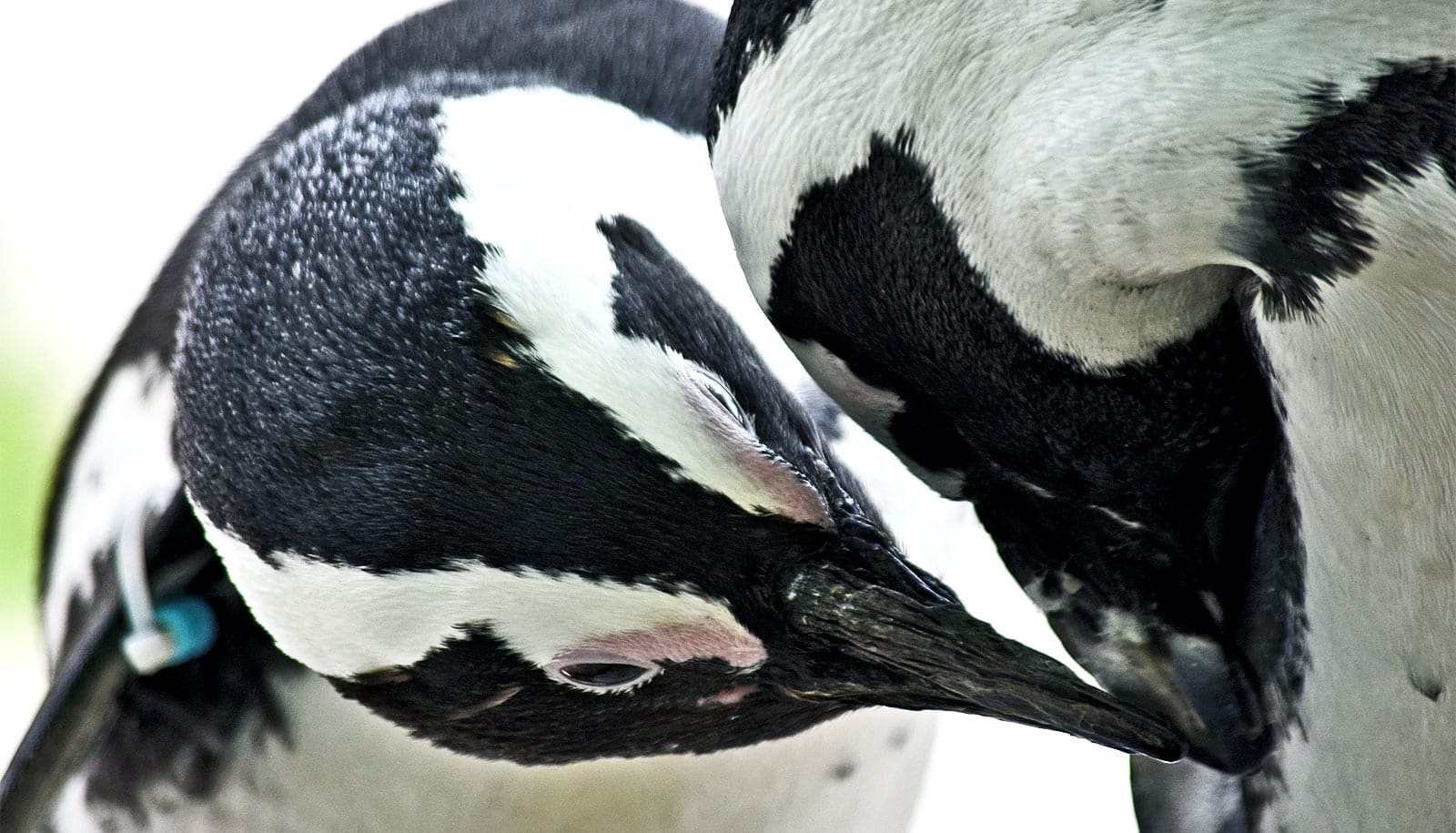It’s time to reframe the question from “why do animals engage in same-sex behavior” to “why not?” researchers argue in a new article.
Over the years, scientists have recorded same-sex sexual behavior in more than 1,500 animal species, from snow geese to common toads. And for just as long evolutionary biologists studying these behaviors have grappled with what has come to be known as a “Darwinian paradox”: How can these behaviors be so persistent when they offer no opportunity to produce offspring?
Writing in the journal Nature Ecology & Evolution, the authors suggest that these behaviors may actually have been part of the original, ancestral condition in animals and have persisted because they have few—if any—costs and perhaps some important benefits.
The benefits of same-sex behavior in animals
“We propose a shift in our thinking on the sexual behaviors of animals,” says lead author Julia Monk, a doctoral candidate in the Yale University’s School of Forestry & Environmental Studies. “We’re excited to see how relaxing traditional constraints on evolutionary theory of these behaviors will allow for a more complete understanding of the complexity of animal sexual behaviors.”
For the paper, the researchers explain that they use the terms “same-sex behaviors” (SSBs) and “different-sex behaviors” (DSBs) rather than terms such as homosexuality or heterosexuality to avoid conflation with terms for human sexual identities.
Typically, research into these behaviors has rested on two assumptions, the authors say. The first is that same-sex behavior (SSB) has high costs because individuals spend time and energy on activities that have no potential for reproductive success. The other is that same-sex behaviors emerged independently in different animal lineages.
They argue that a combination of same-sex and different-sex sexual behaviors is an original condition for all sexually producing animals—and that these tendencies likely evolved in the earliest forms of sexual behavior.
They also dispute the assumption that because different-sex behaviors are essential for sexual reproduction selection—or the tendency of beneficial traits that promote increases in population, size, or resilience—will eliminate sexual behaviors that do not immediately result in reproduction.
On the contrary, they suggest that SSB is not always—and maybe even seldom—very costly. This would suggest that this behavior is actually what evolutionary biologists call “neutral,” meaning that it has neither negative nor positive effects and therefore persists because there’s no reason for natural selection to weed it out.
Moreover, the authors suggest that not only are same-sex behaviors often “not costly,” but can be advantageous from a natural selection perspective because individuals are more likely to mate with more partners. Many species aren’t inherently monogamous but instead try to mate with more than one individual. In many species it can be difficult for individuals to even discern between different sexes.
“So, if you’re too picky in targeting what you think is the opposite sex, you just mate with fewer individuals. On the other hand, if you’re less picky and engage in both SSB and DSB, you can mate with more individuals in general, including individuals of a different sex,” says coauthor Max Lambert, a postdoctoral fellow at the University of California, Berkeley’s environmental science, policy, and management department.
Ideas holding us back
For example, scientists have found that male burying beetles engage in increased same-sex behavior when they perceive a higher cost of missed mating opportunities with females. This suggests that engaging with different-sex behaviors exclusively is actually disadvantageous because it reduces chances to display mating potential when mating opportunities are rare.
Such examples only hint at what scientists don’t know about same-sex behaviors in animals, Lambert says. There are thousands of examples of SSB in animals, he says, yet most of these observations occurred by chance and scientists rarely if ever actively study how often these behaviors occur compared with different-sex sexual behaviors.
“So far, most biologists have considered SSB as extremely costly and, consequently, something that is aberrant,” he says. “This strong assumption has stopped us as a community from actively studying how often and under what conditions SSB is happening. Given our casual observations suggest that SSB seems to happen pretty commonly across thousands of species, imagine what we would have learned if we had assumed this was something interesting and not just a rampant accident.”
Nonetheless, Monk notes that scientific questioning into the persistence of same-sex sexual behaviors has long been observed through the lens of a human society that has historically judged some behaviors to be “normal” or “abnormal.” This tendency, she says, has hindered our understanding of animal behavior in that it has promoted research that only confirms pre-existing assumptions or even averts important steps in the scientific process.
“Once you really dig into the research on the behavior of animals you can’t help but be impressed by the diversity of life and how animals are out there defying our expectations all the time,” she says. “And this should lead us to question those expectations.”
Additional coauthors are from the University of Texas at Austin; the University of California, Berkeley; and the Center for Reproductive Evolution at Syracuse University.
Source: Yale University


